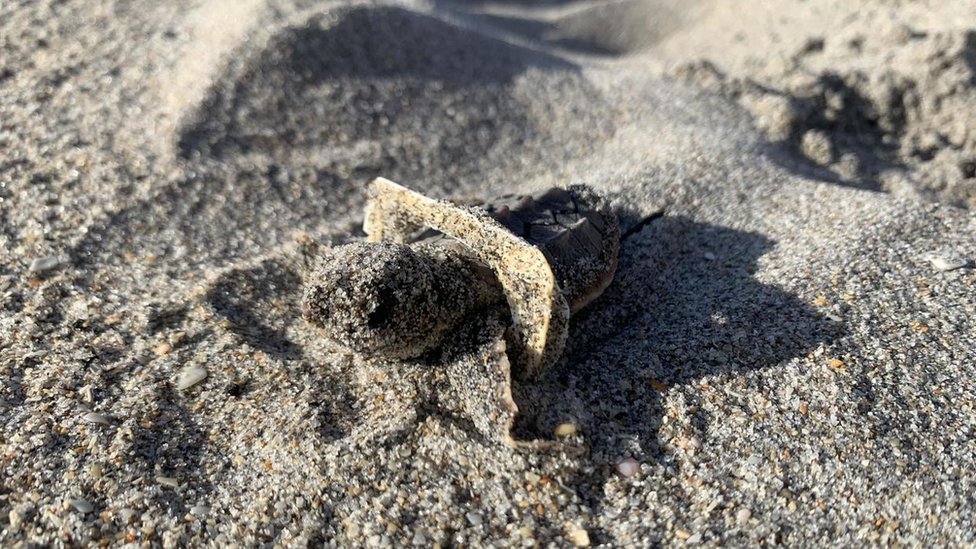

image copyrightGumbo Limbo Nature Center via CBS
A new decade-long survey of sea animals harmed by plastic rubbish in US waters has revealed data on which animals are being affected by plastic pollution.
Oceana, the world’s largest ocean conservation group, tracked about 1,800 cases of animals hurt by plastic since 2009 for a new comprehensive report.
Of the animals surveyed, around 88% are listed as threatened or endangered under the US Endangered Species Act.
Oceana warns that the numbers are sure to be far higher than the data reveals.
The survey released on Thursday examines 1,792 examples of marine animals that became entangled in plastic or that had swallowed it.
Forty species studied in Oceana’s report are listened as threatened or endangered, including Hawaiian monk seals, Florida manatees, Steller sea lions and all six species of sea turtle found in the US.
The report calls the crisis of plastic in the oceans an “unfolding disaster” that is one of several human-caused factors endangering the planet.
“While there may never be a complete account of the fate of all marine animals impacted by plastic, this report paints a grim picture,” said Dr Kimberly Warner, a senior scientist at Oceana who authored the study.
“The world is hooked on plastic because the industry continues to find increasingly more ways to force this persistent pollutant into our everyday routines – and it’s choking, strangling and drowning marine life.”
Around 90% of the cases involved animals swallowing plastic, including microscopic micro-plastic particles. Turtles as young as a few days old were found with plastic in their stomachs.
In other cases, animals became entangled in plastic, making it impossible for them to move.
In Florida, a dead Kemp’s ridley sea turtle was found wrapped in a plastic bag. Scientist believe the animal drowned when the bag filled with sand.
In Virginia, a sei whale developed gastric ulcer after a DVD case she swallowed cut open her stomach.
The report notes that the US produces more single-use plastic than any other nation, and argues that governments must do more to curtail disposable plastic.
Bags, balloons, recreational fishing line, plastic sheeting, food wrappers, bottles and bottle caps, and straws were all products frequently found either ingesting or linked to entanglement.
An estimated 15 million metric tonnes of plastic enter the oceans each year, the report states, adding that this is equivalent to about two bin lorries per minute.
“This will increase,” the authors warn, estimating that the amount of plastic entering the ocean is projected to triple by 2040 due to increased production.
Oceana is recommending companies reduce the amount of plastic produced and offer plastic-free alternatives, and that governments pass policies to help reduce single-use plastics.
Read MoreFeedzy
The surface of any playground must meet standards for enjoyment and safety, and choosing the…
The chance to go to Pearl Harbor offers a truly immersive experience that everyone should…
Ensure safety and efficiency with a well-maintained tanker trailer pressure management system. Invest in quality…
Learn the best methods for soil sampling, from grid and zone sampling to accurate sampling…
If your truck isn’t as comfortable as it should be, you’re likely leaving the road…
When disaster strikes a business—whether it's a flood, fire, or storm—the path to recovery can…